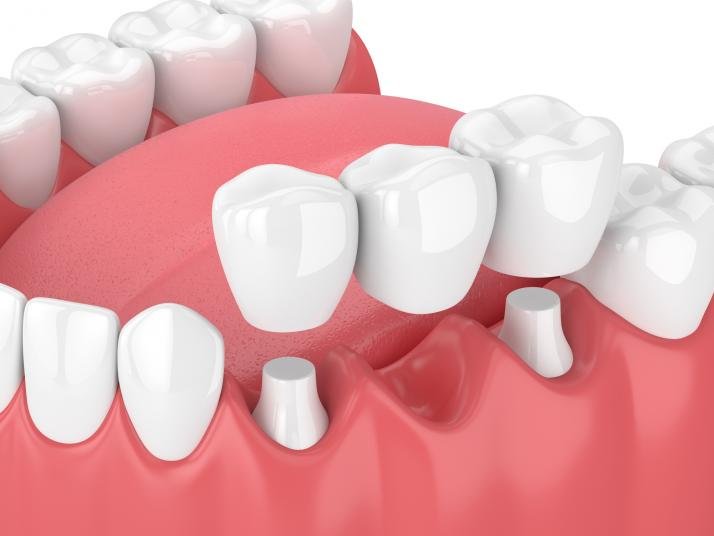Tooth loss can have more consequences than just a gap in your smile. One of the lesser-known side effects of missing teeth is bone loss in the jaw. This raises a common question: can a dental bridge prevent bone loss after a tooth extraction? If you’re considering Dental crowns and bridges (لتيجان وجسور الأسنان ), understanding how these solutions work is essential for making an informed choice.
What Happens to the Jaw After Tooth Loss?
When a tooth is extracted or lost due to injury or decay, the bone in that area no longer receives stimulation from chewing forces. Over time, this lack of stimulation can cause the jawbone to shrink or deteriorate—a process called bone resorption. This can lead to:
-
Changes in facial structure
-
Misalignment of neighboring teeth
-
Weakened support for surrounding teeth
-
Difficulty with chewing or speaking clearly
What Is a Dental Bridge?
A dental bridge is a prosthetic device used to fill the gap left by one or more missing teeth. It typically consists of one or more artificial teeth anchored to the adjacent natural teeth using dental crowns.
In Dubai, dental bridges are a popular restorative option because they:
-
Improve smile aesthetics
-
Restore function for chewing and speaking
-
Prevent nearby teeth from shifting out of alignment
Can a Dental Bridge Prevent Bone Loss?
The short answer is no—a traditional dental bridge does not stop bone loss in the area where the tooth was extracted. While a bridge restores surface-level aesthetics and functionality, it does not replace the root of the missing tooth. And without that root, the underlying jawbone doesn’t get the stimulation it needs to maintain its density.
However, that doesn’t mean bridges don’t play a valuable role. Here’s how they contribute:
What Bridges Can Do?
-
Prevent neighboring teeth from shifting
-
Restore bite balance and chewing ability
-
Maintain the shape of your face in the short term
What They Can’t Do?
-
Stimulate bone growth
-
Prevent bone resorption in the jaw
-
Act as a substitute for tooth roots
Alternatives That Help Preserve Bone:
If preventing bone loss is a major concern, dental implants may be worth considering. Unlike bridges, implants are surgically placed into the jawbone, acting like artificial tooth roots. They stimulate the bone, just like natural teeth, helping preserve its structure.
In some cases, people choose an implant-supported bridge, which combines the stability of implants with the coverage of a bridge when multiple teeth are missing.
Choosing Between a Bridge and an Implant in Dubai:
Dubai offers a range of options for restoring missing teeth. The right solution depends on:
-
Number of missing teeth
-
Location of the gap
-
Bone density in the jaw
-
Budget and personal preferences
Many people opt for bridges due to their quicker treatment time and lower upfront cost. However, if long-term jawbone health is a priority, discussing implant-based alternatives may be worthwhile.
FAQs: Dental Crowns and Bridges in Dubai:
Is a bridge painful to get?
No. The procedure is typically done under local anesthesia. You may feel some sensitivity or discomfort for a few days after placement.
How long does a dental bridge last?
With good oral hygiene, a dental bridge can last 10 to 15 years or even longer.
Can a bridge look natural?
Yes. High-quality materials like porcelain or zirconia can mimic the color and translucency of natural teeth.
How do I care for a dental bridge?
Brush and floss daily, and use special floss threaders to clean under the bridge. Regular dental check-ups are important to monitor the health of the surrounding teeth.
Can I replace a bridge with an implant later?
Yes, in many cases you can transition from a bridge to a dental implant if bone density allows.
Final Thoughts:
While dental crowns and bridges in Dubai (لتيجان وجسور الأسنان في دبي) offer excellent cosmetic and functional solutions for missing teeth, they do not prevent bone loss in the area where the tooth was removed. That’s because a bridge doesn’t replace the root, which is essential for stimulating jawbone preservation.
If your priority is to maintain long-term jaw health, exploring implant options might be a better solution. However, if you’re looking for a fast and reliable way to restore your smile, a dental bridge remains an effective choice. Always consider your goals, timeline, and budget when making your decision—and remember that your smile is an investment in your confidence and overall well-being.






